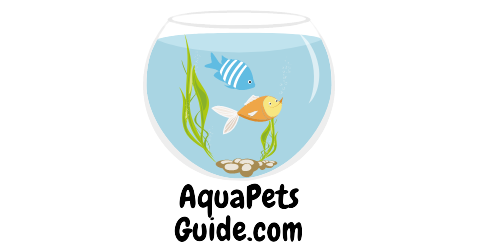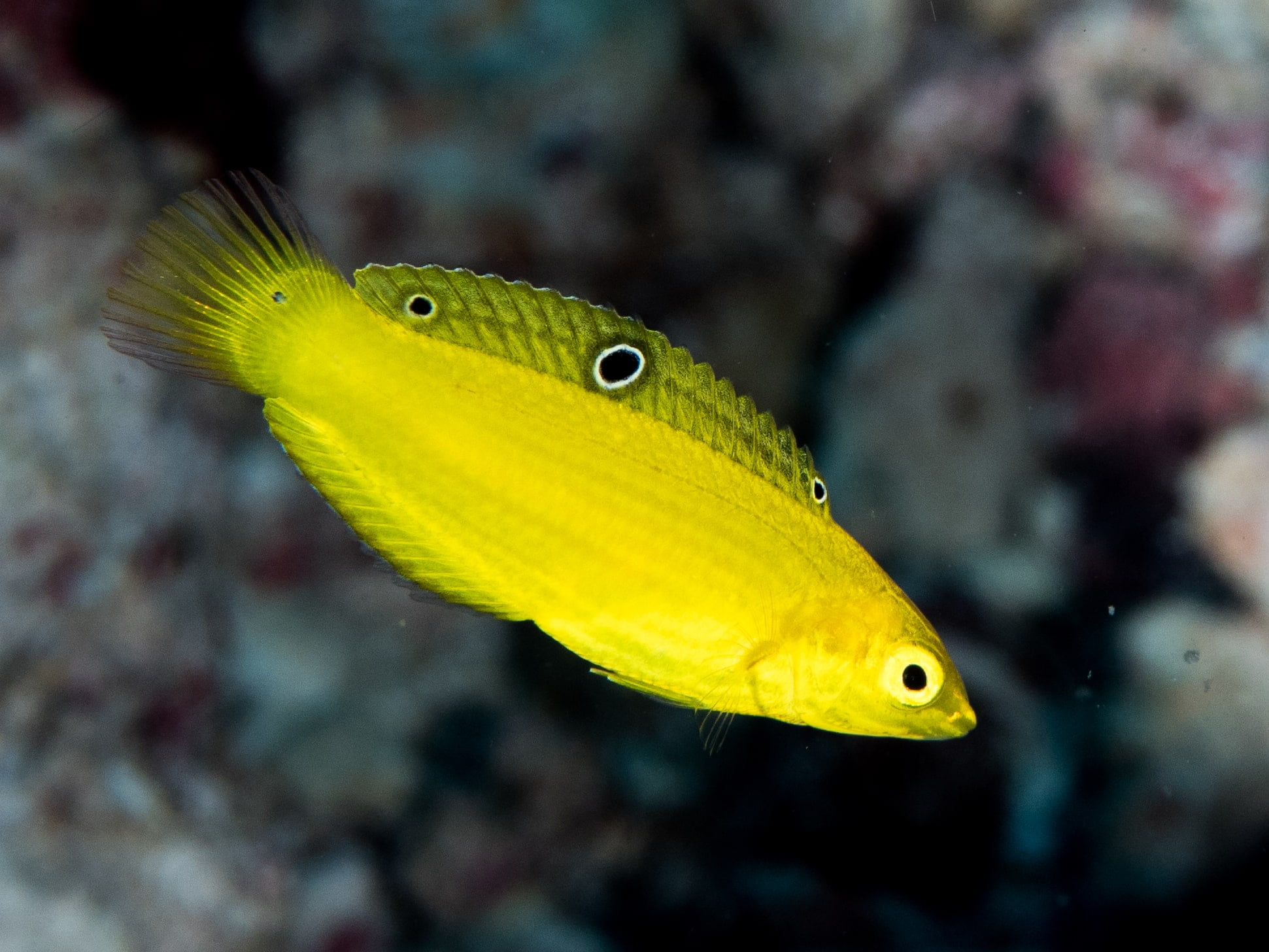Are you ready for some yellow color in your tank? Then you might just consider adding a Yellow Coris Wrasse to your tank.
Not your average yellow color, but a very beautiful yellow color that will brighten your tank.
Yellow Coris Wrasse is a unique saltwater fish, When I see it in an aquarium I can’t help but smile. They are the epitome of peaceful, active, and beautiful fish.
They are very interesting fish and you can add them to your reef tank without a problem given that you know more about them.
And adding it to your reef tank will not only make it more lively but will also help your tank maintain a safe environment free from pests and worms.
In this guide, we’ll learn all about the interesting Yellow Coris Wrasses and how you should take care of it the right way.
Profile
Appearance
The Yellow Coris Wrasse is entirely yellow in color and sometimes can have black saddle marks distributed on its body and fins. When it reaches maturity its fins will turn silver in color.
They are often confused with other types of yellow wrasses such as Silver belly wrasse or Purple wrasse, the others can have small variations such as a silver belly in the case of the Silver belly coris but the care and habits of these fish are the same as they belong to the same family.
Natural habitat
Yellow Coris Wrasse are originally native to the Indo pacific Ocean and can be found in areas near Australia and Indonesia and other nearby islands.
The ones circulating the market nowadays are mostly aquacultured(they keep them in fish farms to fight pests)and they are a bit rare, you might want to regularly check to see if it’s available as they are in high demand.
Behavior
They are totally peaceful fish, they won’t attack other fish on their own accord and will get along with just everyone even with other wrasses.
It’s just that when keeping them with other similar Yellow Wrasses they tend to have a sort of rivalry, so it might be a good idea to keep just one per tank.
They are totally coral-friendly and will do fine with either soft corals as the pulsing xenid or LPS corals as candy cane coral.
But there are always exceptions. which is that they don’t get along with Feather Duster Corals. They will nip at them, as you know these guys are worm eaters.
You should also not keep them with snails and hermits and some shrimps, these little things can also become their prey.
Tank Set up
Tank size
The Yellow Wrasse Coris isn’t that territorial and will basically roam the tank searching for pests and worms in rocks and corals so they don’t need that much space but a 50-gallon(170L) water tank is required as a minimum for them to be comfortable.
Water parameters
Their parameters aren’t that different from other saltwater fish. They can tolerate a temperature between 72-80 Fahrenheit and pH of 8.1-8.4 and a salinity of about 1.023. Basically the typical water setting for most saltwater fish.
Hiding spaces
One thing to note when getting a Yellow Crois Wrasse is to have a lot of sand. These fish species like to hide in the sand just like the freshwater rosy loach.
Make sure the sand is deep enough for it to hide, it’s one of its habits and they bury themselves when they want to sleep or when the feel threatened and get stressed.
When you introduce it to your tank for the first time, it might bury itself and hide in the sand for a couple of days or weeks until they feel completely comfortable only then will it surface again and you’ll be able to enjoy the additional bright yellow color in your tank.
So if you just got them and they seemed to have disappeared out of thin air, don’t freak out and give them a few days or weeks until they adapt.
Feeding habits and requirements
They are carnivores and will eat anything other fish eat such as frozen mysis shrimp, squid, brine shrimp, and other usually meaty food for saltwater fish.
You can also consider giving them pellets but sometimes they don’t like to eat them. So you can experiment with yours and see how it goes.
They will also eat worms and pests in the tank, especially bristle worms, flatworms, and nudibranchs.
Care and Maintenance
Tank maintenance
I can’t stress enough how important water change is to keep your fish healthy and free from diseases.
Accumulated nitrates are very harmful to every fish and you should always monitor it and perform water changes when the nitrate level is high. A good practice will be to change your water when nitrate hit 10 ppm.
I can’t pinpoint exactly how many days until you hit that number as there are many factors that influence it and I do not know how many fish you have in your tank but from years of experience I can tell that it will hit that number every two weeks on average. So you can schedule it every two to three weeks depending on your tank condition.
I will write about this later in more detail in another post so you can know how to properly measure and perform water changes that will make your fish happy and keep it healthy from any possible diseases.
So it will be good to subscribe to our newsletter for updates and exclusive tips and tricks.
One more important thing to note is that they are jumpers, just like freshwater Golden molly and Red Phantom Tetras. Make sure to cover the top of your tank completely and do not leave any opening even if it’s small it will still find it and jump(speaking from experience).
Handling aggression and stress
Due to their tame nature, they are easily prone to get stressed when put in a tank with a bad environment or put with aggressive fish.
Yellow Coris Wrasse aren’t known for starting to act aggressively against other fish, well not talking about small fish such as cleaner shrimps, but if they are with an aggressive fish it will cause them so much stress that they will hide and won’t come again even for food which may lead them to starve.
Now dealing with this situation can be a bit tricky and there are a few options you could consider:
You should not consider buying a Yellow Coris Wrasse if your tank already has an aggressive fish.
if your existing fish aren’t aggressive( they don’t fight to the death ), you can adopt this strategy of feeding them right after introducing the Yellow Coris Wrasse into the tank. This will distract them and reduce any potential aggression. As the fish tend to be less aggressive when they are full.
Another tip is to quarantine the aggressive fish and wait until the Yellow Wrasse surface from its usual hiding phase and get used to the environment before returning the aggressive fish to the tank again.
FAQs
How long do they live?
The Yellow Coris Wrasse’s average lifespan is 10 years in the wild, but the aquacultured one may live less or more depending o how well it was taken care of.
Do they need sand?
Yes. Sand is essential for them as they like to hide and sleep within it.
Are they really reef-safe?
They generally reef safe if the conditions that we mentioned in this article are met.
Can you keep two Yellow Coris Wrasse in the same tank?
It’s possible but as I mentioned in the article above, it’s better to keep one Yellow Coris Wrasse per tank to avoid any rivalries and fights.
Conclusion
We have discovered most of the traits of the Yellow Coris Wrasse but there are still more you can discover by yourself when having them, this will be a very interesting journey, especially if you are keeping wrasses for the first time. You will discover habits and traits that are not common in other fish. I mean where can you find a beautiful Mr pest cleaner fish?
If you have kept a Yellow Coris Wrasse before or have any other questions or want to add something, we will be very happy to hear them from you in the comments.
Image attribution Rickard Zerpe, CC BY 2.0

